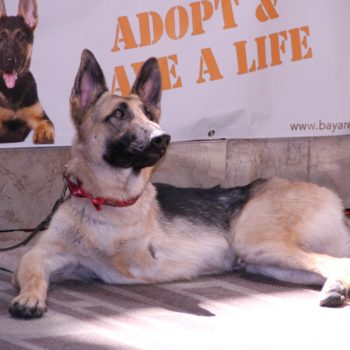Once shunned, no-fee pet adoptions have really come into their own.
It was once conventional wisdom in the animal shelter world that pets adopted for free would suffer at the hands of diabolical people lurking in the shadows just waiting to abuse them. Surely, we thought, people who get animals for free don’t value them, and will at the very least neglect them.
The good news is that our former fears about fee-waived pet adoptions weren’t based in reality, and we have the data to prove it.
A peer-reviewed study conducted by the ASPCA’s Emily Weiss, Ph.D., CAAB, and Shannon Gramann took a look at how no-cost adoptions affect adopters’ perception of the value of cats.
The study, “A Comparison of Attachment Levels of Adopters of Cats: Fee-Based Adoptions Versus Free Adoptions,” was published in the Journal of Applied Welfare Science. In it, the authors found that being adopted without a fee did not lead people to value their pet less than a pet for whom a fee is paid, and concluded:
The many stakeholders who benefit from the program include the animals, the shelter, the adopter, and the community. Implementing a free adult cat adoption program in shelters around the country could dramatically affect the lives of thousands of shelter cats who otherwise either would reside in the shelter for months awaiting adoption or be euthanized. The ultimate goal of shelters is to adopt their animals into loving homes with families who are committed to the success of their pet. The free adult cat adoption program may accomplish these goals, and shelters can feel confident in implementing the program.
Still unsure? That’s okay, there’s more.
A 2013 case study conducted by the Edmonton Humane Society (EHS) looked at 344 adoptions conducted during special promotions, comparing free and paid adoptions directly to each other.
From their results:
- There was no statistical difference in post-adoption veterinary care received by fee-waived and non fee-waived cats. Regardless of fee status, most adopters brought their cats for follow-up veterinary care.
- There was no statistical difference between fee-waived and non fee-waived adopters when it came to retaining cats into the future. In other words, fee-waived cats were just as likely to remain in their homes as non fee-waived cats.
- More than 80 percent of the people who participated in the fee-waived study said they “strongly agree” that EHS considers cats to be valuable and that they would adopt from EHS again. This is important information for shelters to have to alleviate fears that the public will get a false impression that fee-waived cats are not valued.
In another study, survey results gathered from 1,099 pet adopters from the 2011 fee-waived adoption event were analyzed by researchers at Maddie’s® Shelter Medicine Program at the University of Florida. The researchers found that the free adoptions were extremely successful in terms of caregiver characteristics like being attached to the pets, as well as in the pet’s own lifestyle and care:
- Ninety-three percent of the dogs and 95 percent of the cats were still with their adopters a year after the event.
- Most pets lived predominantly indoors, slept in the family bed, and had been to a veterinarian
- 94 percent of all respondents declared a strong or very strong attachment to the pet.
The researchers concluded that successful adoptions do not require payment of a fee, and free adoption promotions may increase adoptions without compromising the quality of the animal’s life.
So when it comes to designing adoption programs, don’t be afraid to dive into free pet adoptions; turns out the water’s fine!
Also of interest:
Animal Sheltering Online: Free to a good home
Tails of a Shelter Vet: Free pet adoptions
Best Friends Animal Society: Why reduced-fee adoptions work
Fears, facts and forever homes: What we know about free pet adoptions (Webcast)

